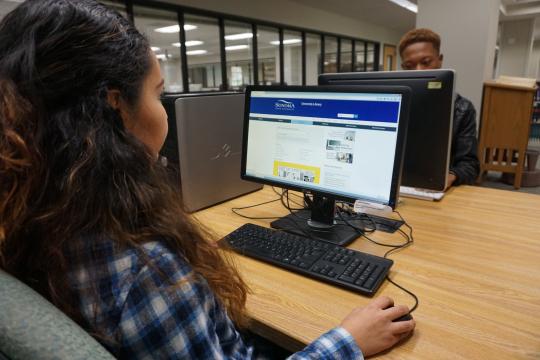The Hyperlinked Academic Library:
Since beginning my Hyperlinked journey, I’ve grown curious regarding the roles academic libraries possess in our discussion on technology and the user. Specifically, I wonder how academic librarians fulfill the goal of not necessarily providing scholars the answers of their questions—rather, providing scholars the online resources which can help them in endeavors beyond college and in their everyday life. Where precisely does technology, an evolving appliance that’s challenging to keep up with, stand? In the discussion of academia, it is an unavoidable force “Having transformed the work of librarians, the digital world has also impacted all aspects of the research process. Today’s students and researchers are interacting with information resources and web-based tools and technologies from the moment they have their initial idea, through planning their research, the experimental phase and fieldwork, to disseminating their findings and promoting reuse of their research outputs” (Webster, 2017). The resources are there, of course, but are scholars interacting with them the way that they should?

Note. Sonoma State University students doing research on library computers.
“Students need to learn how to use academic libraries to do academic work. But not all information is academic, and students will need to know something about the wider landscape of information to function in a world that’s highly driven by networked and powerful information systems” (Fister, 2017). Like members we’ll encounter in a public library setting, academic librarians face the task of teaching numerous students of different learning styles information literacy. Information literacy, I believe, is the most essential tool that benefits scholars during and after their educational process. You truly cannot succeed without it in this day of age, especially with the rise of misinformation and disinformation even technology can’t 100% filter out. How information literacy is accomplished is through honest communication and open collaboration between the librarian and the user. For online resources offered to be used—and to be used adequately—students should feel encouraged to come to the library and interact with faculty.
What I’m curious of now, is how do we make or keep scholars across various fields interested in what the library has to offer? How do we create an appropriate balance of both physical and digital resources? How do we make academic libraries a space where scholars want to learn in the isolating age we’re living in?
References
Fister, B. (2017, June 1). The boundaries of ‘information’ in information literacy. Inside Higher Ed. https://www.insidehighered.com/blogs/library-babel-fish/boundaries-information-information-literacy
University Library at Sonoma State University. (n.d.). Computers. https://library.sonoma.edu/study/computers
Webster, K. (2017, February 15). Reimagining the role of the library in the digital age: changing the use of space and navigating the information landscape. LSE Impact Blog. https://blogs.lse.ac.uk/impactofsocialsciences/2017/02/15/reimagining-the-role-of-the-library-in-the-digital-age-changing-the-use-of-space-and-navigating-the-information-landscape/?platform=hootsuite
@lorraine5and this is so interesting and Fister’s ideas from 2017 are even more resonating in 2025. How are we preparing our students to navigate a world where there’s artificial intelligence embedded in practically everything going on? It really is a rallying cry for librarians to be heavily involved in how AI is used in education and I would say K through 12 and then higher ed too.